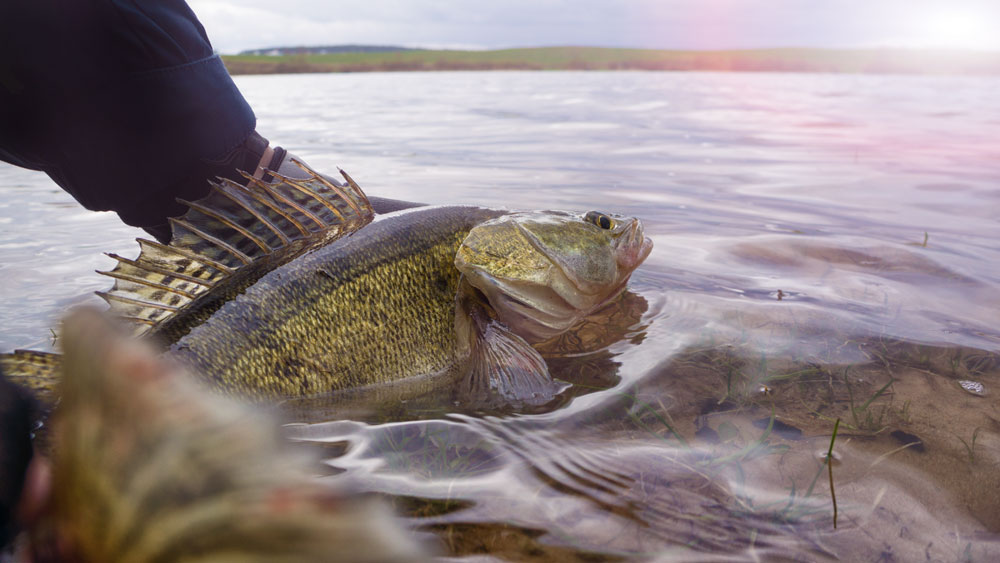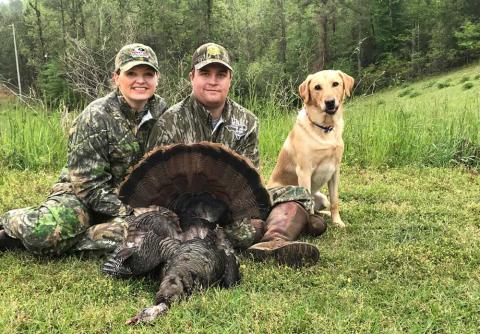How to Catch Confused Walleyes
provided by John E. Phillips
Mossy Oak Pro Johnnie Candle, from Devils Lake, North Dakota, has been a walleye tournament fisherman since 1994. He won the 2010 World Walleye Championship and in a normal year, would fish 6-10 walleye tournaments held all over the country. Candle also guides on Devils Lake as a professional angler. This week he shares information with us on spring fishing for walleyes.

At the time of this writing in late April, Devils Lake most years is usually unthawed, opening the door for walleye fishing. However, this year - 2020 - the North has had a surprisingly late winter, and Devils Lake is still covered with ice. During a slow, late spring like we have had, the walleyes often become confused and don’t know where they are supposed to be. While water temperature is important when it comes to fishing successfully for walleyes, another factor that many novice walleye fishermen may not understand is that the photoperiod (the length of daylight hours) can be as confusing to anglers as it is to the fish. Sometimes your gauge will tell you that the water temperature is at the right degree for the walleye to be in shallow water, but you may not find them. The fish pay more attention to the photoperiod (less light), than the water temperature, which makes walleye fishing challenging.
When ice is still on the lake, the walleyes don’t have as much light coming into the deep water where they are holding. Then once the ice melts, the sunlight penetrates deeper into the water. When the walleyes receive the light that they are accustomed to getting during the winter months, they relate more to their winter patterns (and will stay in deep water) than the water temperature. Although their body temperatures will tell them that they should move into shallow water, since they’re not receiving the light they generally get in April, they really don’t know what they’re supposed to do.
As I mentioned earlier, when ice is in the lake later than normal, not only do the walleyes become confused, but many walleye fishermen become confused as well. As soon as the ice melts, most walleye fishermen are excited about getting their boats out on the lake. Since it’s spring, most of them think that the walleyes will be in shallow water. They’ll go to the bank and start fishing in 2-4 feet deep water where the walleye should be, but they’re not there.
One thing I remind folks of is that walleyes don’t know that the ice has melted. When the ice is no longer on the water, the water temperature may still be in the 30-degree range, and the surface temperature of the water still will be fairly cold. When I start fishing for walleyes after the ice melts, I go to the same places where I’ve caught walleyes during ice-fishing season. I’ve learned that walleyes still will be in relatively deep water, while waiting for sun rays to reach them, letting them know that spring has arrived.
Deep-water fishing for walleyes often lasts for 2-3 days after the ice has melted before the walleyes start moving to the 2-4 foot deep water along the shoreline. The walleyes decide that they’ve been cold long enough and want to swim to shallow water as soon as they can. I’ve realized that most of the time, you’ll start finding the walleyes in shallow water a week after the ice is gone.
To learn the size of walleyes Candle is producing, go to his website www.johnniecandle.com, or call him at 701-371-9431.






























